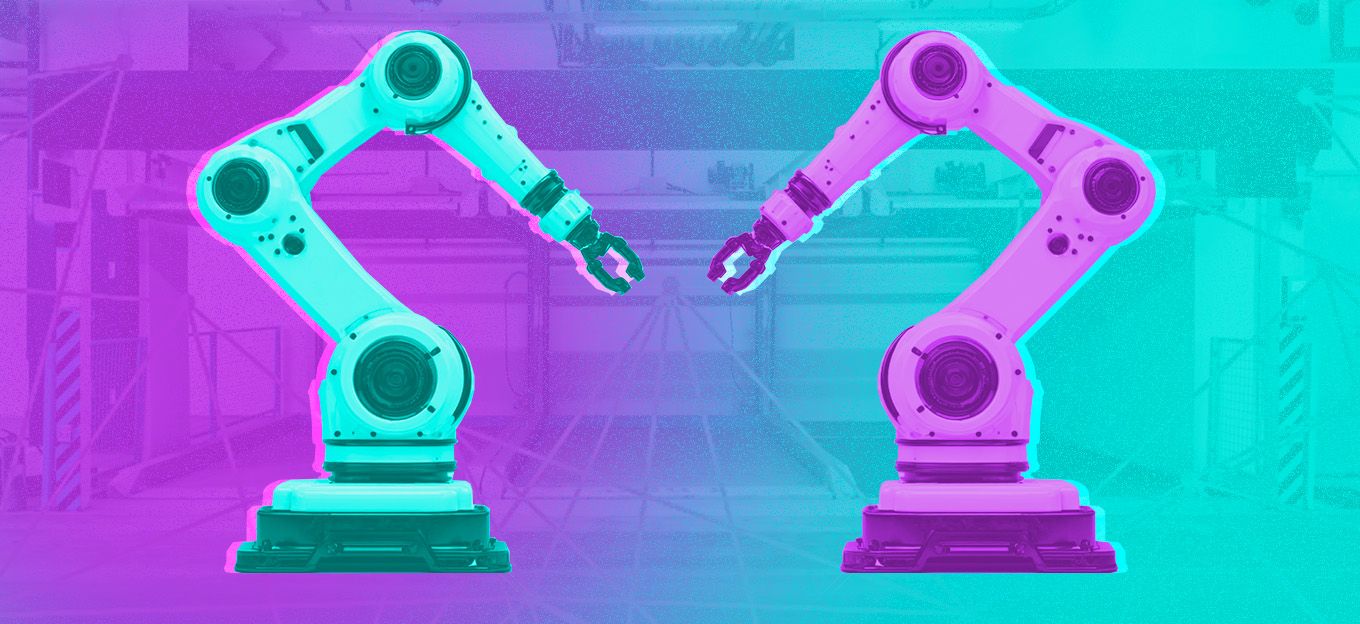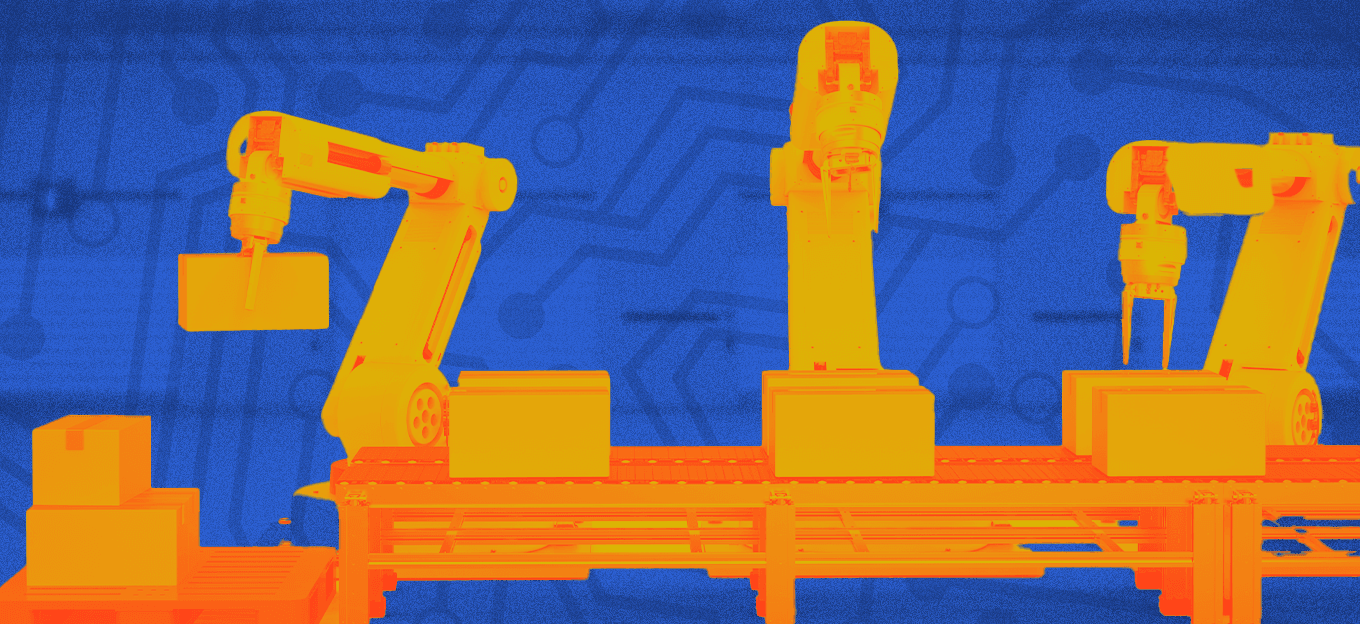IoT in Manufacturing: The Success Story Nobody's Talking About
IoT in Manufacturing: The Success Story Nobody's Talking About
- Last Updated: December 2, 2024
Philip Piletic
- Last Updated: December 2, 2024



For many years now, pundits and tech industry evangelists have been touting IoT technology as a true game-changer for every type of Applications imaginable. According to prevailing wisdom, we were all on the verge of a world where connected devices were all around us. Some would handle mundane tasks and send telemetry to far-off control centers, some would inform the next generation of smart cities, and still, others would allow us all to build the long-promised smart homes of the future.
Now, though, in 2020, it looks like the IoT is taking a bit of a slower path to mass adoption than many people expected. Part of the reason for that is that the infrastructure needed to support it doesn't yet exist in most places. But there is one place where the infrastructure wasn't a problem – manufacturing. And predictably, it is in manufacturing where IoT technology has made the fastest inroads. But the question remains – is IoT proving useful in manufacturing? Here's a look at the hurdles that IoT in manufacturing faced and where IoT technology is already taking off.
Augmenting and Replacing Legacy Systems
One of the biggest barriers to mass IoT adoption in many industrial and manufacturing settings is that the technology wasn't always compatible with pre-existing legacy systems. That meant that many manufacturers faced a catch-22 when it came to IoT adoption. They could either build out networks of connected devices to work in parallel with existing systems, or they could redesign their processes and equipment from the ground up with IoT in mind.
The manufacturing industry is fertile soil for IoT implementation. While other sectors have a spotlight on them, great advances are been quietly made in industrial IoT.
For the businesses that chose the former, a big hurdle was figuring out how to have IoT sensors and other new technology play nice with their manufacturing execution systems (MESs). To bridge the gap, several MES vendors started evolving their systems to accommodate the array of new devices manufacturers wanted to use. Today, the biggest decision manufacturers face is the choice between cloud-based MES vs. on-premise MES solutions, almost all of which are IoT-capable.
With that hurdle cleared, the adoption of IoT in manufacturing exploded. Even when taking the effects of the coronavirus pandemic into account, the industrial slice of the IoT sector is expected to grow at a CAGR of 16.7% through 2027 – to a whopping $263.4 billion annually.
Where IoT is Already Impacting Manufacturers
With their ability to integrate IoT technology now taken care of, manufacturers of all stripes started putting the technology to work. Already, it's been improving efficiency, safety, and future planning processes for early adopters. Examples include:
Energy Efficiency Gains
One of the biggest ongoing operating costs associated with manufacturing facilities is driven by the sheer amount of energy they consume to operate. It's also an area where IoT technology is making a significant impact. By using data on manufacturing equipment gathered in real-time by IoT sensor networks, manufacturers can build detailed models of their energy usage patterns. Doing so can allow them to reorganize manufacturing processes to shift energy-hungry processes to off-peak hours when electricity rates are lower.
They're also able to use their IoT platforms to detect possible bottlenecks in their processes, which can help them refine operations for greater efficiency. In some cases, operational data gleaned from IoT sensors can even help manufacturers decide exactly when it's worth investing in new machinery, once it becomes clear that existing machines are more costly to operate than to replace.
Collaborative Robots
Another big way that IoT is impacting manufacturers is in enabling the safe and routine use of collaborative robots. These systems – known colloquially as cobots – are an array of assistive technologies that help human workers handle repetitive tasks or other assembly work too arduous to do by hand. Unlike prior industrial robots, cobots tend to be small, agile, flexible, and don't have to be segregated from human workers for safety reasons. That's thanks to the array of IoT sensors they employ to make sure they don't impede human workers or otherwise injure them.
The use of cobots is increasing productivity for manufacturers without increasing overhead costs or posing safety concerns. And, their adoption is only just getting started. As the technology improves, IoT-connected cobots are going to become standard equipment across a wide range of manufacturing operations. As that happens, they'll bridge the gap between today's labor-intensive factories and the fully-automated manufacturing facilities of the future.
Digital Twins
Efficient manufacturing processes rely almost entirely on predictability. Factory operators need to know how long each step in a process takes, what resources are needed, and how long the process can operate continuously before needing breaks for maintenance and other periodic tasks. That overarching need for predictability makes it difficult for operators to know how the addition of new equipment might impact output. It also makes them hesitant to make changes to existing equipment, even if they're all but certain that the changes would be an improvement.
That brings us to another vital and emerging use of IoT technology in manufacturing. Factory operators are using the myriad data streaming from their connected devices to make precise computer models of their industrial equipment. These digital twins, as they're known, allow operators to test any proposed equipment tweaks or replacements to see the exact effect they'll have on the output. This helps them to make seamless upgrades and changes to their processes without fear of upsetting the delicate balance that ensures predictability.
The Bottom Line
If the question is whether IoT is living up to its promise and proving useful in manufacturing – the answer is a resounding yes. While it might not be getting the constant attention that IoT breakthroughs in other more consumer-friendly sectors tend to get, it remains one of the biggest success stories in all of the global IoT ecosystem.
And, in a way, it's bringing IoT much closer to realizing the potential that so many experts predicted it had. As more manufacturers come to rely on the advances that IoT makes possible, the efficiencies they demonstrate will make the technology that much more attractive to businesses in other sectors. In other words, manufacturers are fast becoming the real-world testbed for what's next in IoT, and everyone else will soon follow their lead – and that's great news for all involved.
The Most Comprehensive IoT Newsletter for Enterprises
Showcasing the highest-quality content, resources, news, and insights from the world of the Internet of Things. Subscribe to remain informed and up-to-date.
New Podcast Episode

IoT and AI in 2026
Related Articles




